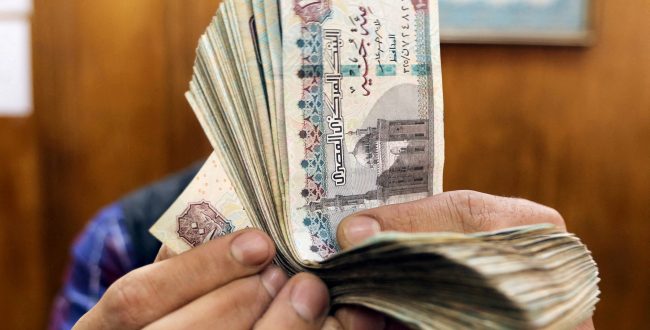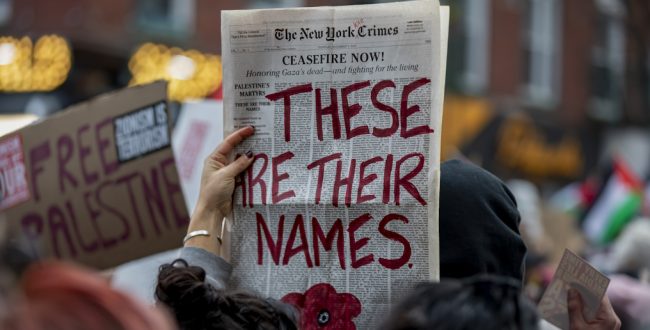This article was first published in Hebrew in ynet, as part of an ongoing collaboration between the most popular news website in Israel, and the Forum For Regional Thinking.

Below are share buttons
Breaking the Taboo: Arabic Erotic Literature
A new movement of Arabic erotic Literature explores images of sex and love. many books of this genre have been banned, but readers still manage to find them
“May Allah grant glory and eternal salvation to those who know how to stroke a soft cheek in an accomplished manner, to give a just accolade to a slender waist, and to probe into the sweetest vagina with a befitting skill.”
Jalal a-Din as-Suyuti, 1547 The Book of Exposition
In 2016, Hani Saleh Tawfiq sued the author Ahmed Naji, claiming that the latter’s erotic novel, “The Use of Life,” (2014) caused him a heart attack due to the book’s profanity and immorality. The Egyptian court ruled in favor of Tawfiq, deeming Naji yet another “martyr” in the struggle for freedom of speech, and making of him symbol in the fight against sexual taboo.
Naji, however, was no pioneer, rather he is part of a new movement of Arabic erotica that has been gaining momentum since the 1980’s, beginning with the works of poets such as Hassan Taleb, Shaker Laibi, and Ahmad Abd al-Muati Hijazi, who began to explore the use of explicit and implicit images of body, sex and love in what was initially perceived as groundbreaking and astonishing. A prominent example of this literature is “Erotica,” a collection of poems by Sa’adi Yosef, a well-known Iraqi poet, in which he dedicates many lines to the intimate description and praise of the female body. Another example is Amjad Nasser’s “Joy of Watching You” (1996), in which erotic love is presented as “the ultimate source of redemption.” Nasser used images of male dominance while describing sexual and romantic dynamics in which men and women fill the roles of predator and prey.
Alongside poetry, the erotic literary movement also included prose, with books and short stories that shook the public discourse and inspired debates and conflict throughout the Arab world. Although such works of prose have been more subdued and less pornographic than most of the poetic works mentioned above, with Abdu Wazen’s book “The Sensory Garden” (1993) presenting a good example of this, many books of this genre have been banned from publication and distribution in the majority of Arab countries.
While the majority of erotic literature in the 1990s was written by authors from the Levant countries (Syria, Lebanon, Jordan and Palestine), there are several notable examples from the Gulf. Omani Sa’ud al-Muthaffar’s novel “The Forbidden Ones” (1994) presents a story of erotic love alongside the his examination of the sultanate’s rapid modernization and urbanization, using romance and sexuality as a lens through which to examine social and cultural changes occurring drastically in Omani society, throughout which the author paints detailed scenes of passion-filled erotic interactions. This book, however, was neither banned nor was its author punished in the sultanate. On the contrary, it has remained on sale in many Arab countries and has even received praise for its skillful handling of the complex social reality in the ever-changing Arabian Gulf.
The Beauty of the Male Figure
A prominent component of erotic Arabic literature in the 1980s and 1990s was the ritual idealization of the female body by male authors and narrators, accompanied by fantasies of possibilities of pleasure. Female sexuality, on the other hand, has been subject to public criticism and extensive censorship, even when discussed in a manner that is not erotic or descriptive. Laila Baalbaki and Colette Khouri from Syria were among the first women to address topics of female sexuality in the 1960’s, not necessarily in an erotic context. In Baalbaki’s 1960s short story collection, “Spaceship to the Moon,” the narrator provides an enthusiastic sexual description of her lover, which led the author to conviction and imprisonment for allegedly corrupting the society with her literature. However, the vast majority of her short stories focused on emotion, presenting poetic depictions of love and longing. During those years, female sexuality was still taboo in all of its literary forms.
Later female writers from the 80s and the 90s, such as Ghada as-Samman and Nawal as-Saadawi, were more bold in their writing, and presented women as a sexual beings with the ability to make rational decisions and comprehend complexity. Although they did not present the reader with explicit descriptions of the sexual act, they acknowledged and acclaimed women’s sexual desires. In “Beirut 75” (1995), as-Samman’s female character asserts: “’Oh, how amazing is the man’s body! Why don’t women notice? Why do they believe the legend that a woman, as a creature, is more beautiful than a man?” Statements such as these have been frequently condemned and criticized, leading many female authors of erotica to publish in languages other than Arabic and outside of the region.
One such example is Najma (pseudonym), author of “The Almond,” an autobiographical novel about sexual awakening and the struggle to find oneself within Moroccan society as an independent and sexually adventurous woman. Najma’s book describes the forced marriage at age 17 to an older, violent man, and her decision to abscond and search for a new life. Through the narrative, the author poses difficult questions about notions of freedom, and social and cultural manipulation, although she ultimately expresses appreciation and favor for personal and individual freedom. Her anonymity allows Najma to describe sexual pleasure in detailed specificity, comparing it graphically yet elegantly to prayer and religious ritual.
Why the Silencing?
Since the beginning of the 21st century, the female presence in Arabic erotic literature has been growing. Some writers use eroticism to offer in-depth analyses of issues of equality, taboo, and social dynamics. In “Proof of the Honey” (2007) by Syrian Salwa al-Neimi, the author presents social challenges faced by a modern female scholar with deep sexual curiosity. She uses the novel to explore an impressive variety of pre-modern Arabic and Islamic texts that discuss sexuality, many of which were written by well-known scholars, such as the eminent al-Jahiz from the 8th century, who are not typically known for the intellectual dealings with intercourse.
Al-Neimi’s descriptive sex scenes are explicit and striking, alongside which the narrator frequently ponders the reason for sexuality’s silencing in the Arabic intellectual tradition, as these topics were once considered beneficial and important in the early works. This deep historical examination indeed differentiates “Proof of the Honey” from many of its erotic counterparts, leading it to be translated to 19 other languages and widely read internationally. Although the book was banned in every Arab country in the Middle East, this has not restricted readers from getting their hands on the PDF, which was circulated widely among young and old, men and women alike throughout the region.
Another literary phenomenon that defied many social boundaries by insisting on bringing sexuality to popular discourse is “Jesed,” the first Arabic erotic magazine established by Lebanese poet and author, Joumana Haddad in 2008. The publication address issues such as homosexuality, masturbation, violence, sexual repression and sexual awakening. It includes a column, “My First Time,” in which prominent figures and celebrities discuss their first sexual encounter.
13th Century Potions
As al-Neimi asserts in her groundbreaking novel, the Islamic and Arabic textual traditions have a rich history of sexual deliberations and erotica. Since the time of the Prophet Muhammad, the intellectual discourse in Arab society witnessed in-depth discussions of sexuality, addressing both ailments and pleasure, in both men and women. “The Science of Intercourse” (‘Alm al-Bah) was a multidisciplinary literary genre in the Abbasid Empire in the ninth century, devoted to erotology (the study of sexual desire and the art of love), using a combination of religious concepts, philosophical ideas and medical terminology. Many of the Arab-Muslim erotic writers of the pre-modern era were scholars with religious training, social commentators, and even sexual therapists. This literature is divided into two approaches: one is a physio-medical approach, and the other is a psychological-pornographic approach, the purpose of which was usually to arouse sexual desire in the reader.
The spiritual leader and scholar, Jalal ad-Din as-Suyuti from the 15th century, nicknamed the “Scholar of Love,” went so far as to claim that the Sunnah, the story of the Prophet’s life, was a major inspiration for ancient authors of Muslim erotic volumes. As-Suyuti wrote that the prophet was extremely mindful of the quality of his sexual relations, and instructed that his followers make similar efforts. However, erotic inspiration did not come exclusively from Islam. Naṣīr al-Dīn al-Ṭūsī, a successful mathematician and biologist from the 13th century, authored “The Book of Choice Sexual Stimulants and the Sultan’s Potions,” that presents numerous aphrodisiacs and sexually stimulating activities. From the same century, Najm ad-Din al-Qazuini’s “Encyclopedia of Pleasure” dealt with erotic behavior and techniques, and included many praises for women and the act of lesbian sex.
After the heyday of Arab erotology – which lasted from from the 5th through the 14th century – public discourse on gender and sexuality became a taboo in most parts of Arab societies, a phenomenon that many scholars attribute to colonialism, Western science, and the abolition of slavery. Today there is a renewed rise in sexual discourse and erotica: more and more young people across the Middle East are ready to dismantle social conventions and norms relating to sexual discourse, for educational reasons, for the exploration of social and cultural expressions, and for pleasure.
“May Allah grant glory and eternal salvation to those who know how to stroke a soft cheek in an accomplished manner, to give a just accolade to a slender waist, and to probe into the sweetest vagina with a befitting skill.”
Jalal a-Din as-Suyuti, 1547 The Book of Exposition
In 2016, Hani Saleh Tawfiq sued the author Ahmed Naji, claiming that the latter’s erotic novel, “The Use of Life,” (2014) caused him a heart attack due to the book’s profanity and immorality. The Egyptian court ruled in favor of Tawfiq, deeming Naji yet another “martyr” in the struggle for freedom of speech, and making of him symbol in the fight against sexual taboo.
Naji, however, was no pioneer, rather he is part of a new movement of Arabic erotica that has been gaining momentum since the 1980’s, beginning with the works of poets such as Hassan Taleb, Shaker Laibi, and Ahmad Abd al-Muati Hijazi, who began to explore the use of explicit and implicit images of body, sex and love in what was initially perceived as groundbreaking and astonishing. A prominent example of this literature is “Erotica,” a collection of poems by Sa’adi Yosef, a well-known Iraqi poet, in which he dedicates many lines to the intimate description and praise of the female body. Another example is Amjad Nasser’s “Joy of Watching You” (1996), in which erotic love is presented as “the ultimate source of redemption.” Nasser used images of male dominance while describing sexual and romantic dynamics in which men and women fill the roles of predator and prey.
Alongside poetry, the erotic literary movement also included prose, with books and short stories that shook the public discourse and inspired debates and conflict throughout the Arab world. Although such works of prose have been more subdued and less pornographic than most of the poetic works mentioned above, with Abdu Wazen’s book “The Sensory Garden” (1993) presenting a good example of this, many books of this genre have been banned from publication and distribution in the majority of Arab countries.
While the majority of erotic literature in the 1990s was written by authors from the Levant countries (Syria, Lebanon, Jordan and Palestine), there are several notable examples from the Gulf. Omani Sa’ud al-Muthaffar’s novel “The Forbidden Ones” (1994) presents a story of erotic love alongside the his examination of the sultanate’s rapid modernization and urbanization, using romance and sexuality as a lens through which to examine social and cultural changes occurring drastically in Omani society, throughout which the author paints detailed scenes of passion-filled erotic interactions. This book, however, was neither banned nor was its author punished in the sultanate. On the contrary, it has remained on sale in many Arab countries and has even received praise for its skillful handling of the complex social reality in the ever-changing Arabian Gulf.
The Beauty of the Male Figure
A prominent component of erotic Arabic literature in the 1980s and 1990s was the ritual idealization of the female body by male authors and narrators, accompanied by fantasies of possibilities of pleasure. Female sexuality, on the other hand, has been subject to public criticism and extensive censorship, even when discussed in a manner that is not erotic or descriptive. Laila Baalbaki and Colette Khouri from Syria were among the first women to address topics of female sexuality in the 1960’s, not necessarily in an erotic context. In Baalbaki’s 1960s short story collection, “Spaceship to the Moon,” the narrator provides an enthusiastic sexual description of her lover, which led the author to conviction and imprisonment for allegedly corrupting the society with her literature. However, the vast majority of her short stories focused on emotion, presenting poetic depictions of love and longing. During those years, female sexuality was still taboo in all of its literary forms.
Later female writers from the 80s and the 90s, such as Ghada as-Samman and Nawal as-Saadawi, were more bold in their writing, and presented women as a sexual beings with the ability to make rational decisions and comprehend complexity. Although they did not present the reader with explicit descriptions of the sexual act, they acknowledged and acclaimed women’s sexual desires. In “Beirut 75” (1995), as-Samman’s female character asserts: “’Oh, how amazing is the man’s body! Why don’t women notice? Why do they believe the legend that a woman, as a creature, is more beautiful than a man?” Statements such as these have been frequently condemned and criticized, leading many female authors of erotica to publish in languages other than Arabic and outside of the region.
One such example is Najma (pseudonym), author of “The Almond,” an autobiographical novel about sexual awakening and the struggle to find oneself within Moroccan society as an independent and sexually adventurous woman. Najma’s book describes the forced marriage at age 17 to an older, violent man, and her decision to abscond and search for a new life. Through the narrative, the author poses difficult questions about notions of freedom, and social and cultural manipulation, although she ultimately expresses appreciation and favor for personal and individual freedom. Her anonymity allows Najma to describe sexual pleasure in detailed specificity, comparing it graphically yet elegantly to prayer and religious ritual.
Why the Silencing?
Since the beginning of the 21st century, the female presence in Arabic erotic literature has been growing. Some writers use eroticism to offer in-depth analyses of issues of equality, taboo, and social dynamics. In “Proof of the Honey” (2007) by Syrian Salwa al-Neimi, the author presents social challenges faced by a modern female scholar with deep sexual curiosity. She uses the novel to explore an impressive variety of pre-modern Arabic and Islamic texts that discuss sexuality, many of which were written by well-known scholars, such as the eminent al-Jahiz from the 8th century, who are not typically known for the intellectual dealings with intercourse.
Al-Neimi’s descriptive sex scenes are explicit and striking, alongside which the narrator frequently ponders the reason for sexuality’s silencing in the Arabic intellectual tradition, as these topics were once considered beneficial and important in the early works. This deep historical examination indeed differentiates “Proof of the Honey” from many of its erotic counterparts, leading it to be translated to 19 other languages and widely read internationally. Although the book was banned in every Arab country in the Middle East, this has not restricted readers from getting their hands on the PDF, which was circulated widely among young and old, men and women alike throughout the region.
Another literary phenomenon that defied many social boundaries by insisting on bringing sexuality to popular discourse is “Jesed,” the first Arabic erotic magazine established by Lebanese poet and author, Joumana Haddad in 2008. The publication address issues such as homosexuality, masturbation, violence, sexual repression and sexual awakening. It includes a column, “My First Time,” in which prominent figures and celebrities discuss their first sexual encounter.
13th Century Potions
As al-Neimi asserts in her groundbreaking novel, the Islamic and Arabic textual traditions have a rich history of sexual deliberations and erotica. Since the time of the Prophet Muhammad, the intellectual discourse in Arab society witnessed in-depth discussions of sexuality, addressing both ailments and pleasure, in both men and women. “The Science of Intercourse” (‘Alm al-Bah) was a multidisciplinary literary genre in the Abbasid Empire in the ninth century, devoted to erotology (the study of sexual desire and the art of love), using a combination of religious concepts, philosophical ideas and medical terminology. Many of the Arab-Muslim erotic writers of the pre-modern era were scholars with religious training, social commentators, and even sexual therapists. This literature is divided into two approaches: one is a physio-medical approach, and the other is a psychological-pornographic approach, the purpose of which was usually to arouse sexual desire in the reader.
The spiritual leader and scholar, Jalal ad-Din as-Suyuti from the 15th century, nicknamed the “Scholar of Love,” went so far as to claim that the Sunnah, the story of the Prophet’s life, was a major inspiration for ancient authors of Muslim erotic volumes. As-Suyuti wrote that the prophet was extremely mindful of the quality of his sexual relations, and instructed that his followers make similar efforts. However, erotic inspiration did not come exclusively from Islam. Naṣīr al-Dīn al-Ṭūsī, a successful mathematician and biologist from the 13th century, authored “The Book of Choice Sexual Stimulants and the Sultan’s Potions,” that presents numerous aphrodisiacs and sexually stimulating activities. From the same century, Najm ad-Din al-Qazuini’s “Encyclopedia of Pleasure” dealt with erotic behavior and techniques, and included many praises for women and the act of lesbian sex.
After the heyday of Arab erotology – which lasted from from the 5th through the 14th century – public discourse on gender and sexuality became a taboo in most parts of Arab societies, a phenomenon that many scholars attribute to colonialism, Western science, and the abolition of slavery. Today there is a renewed rise in sexual discourse and erotica: more and more young people across the Middle East are ready to dismantle social conventions and norms relating to sexual discourse, for educational reasons, for the exploration of social and cultural expressions, and for pleasure.
This article was first published in Hebrew in ynet, as part of an ongoing collaboration between the most popular news website in Israel, and the Forum For Regional Thinking.
















